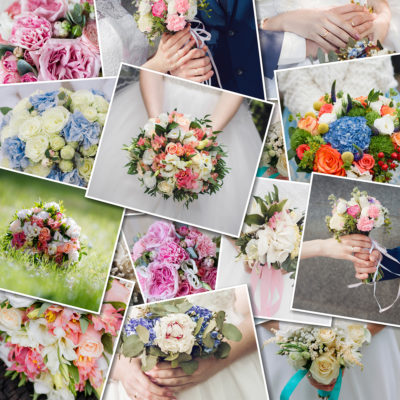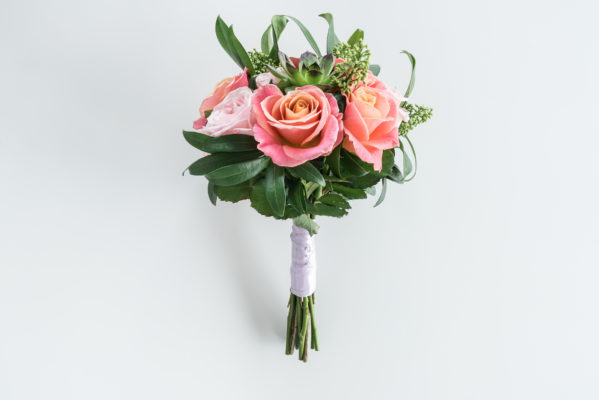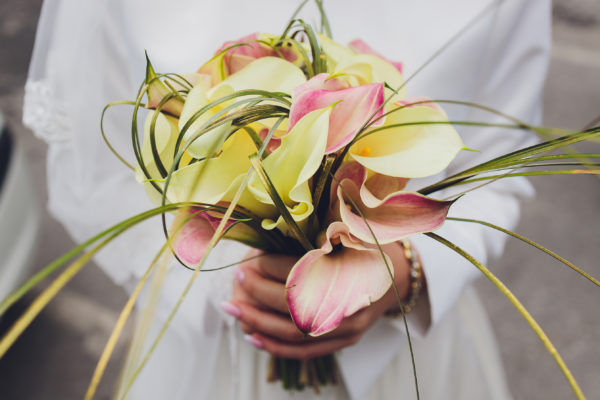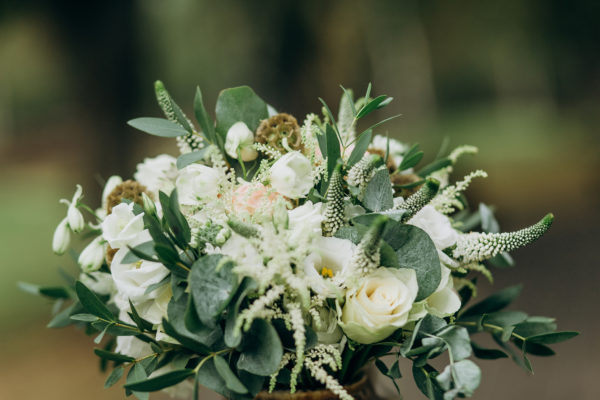
Every bride’s dream is to have the perfect wedding. It’s your big day and you want to make it memorable.
For that, you need a checklist that has to be followed religiously. No wedding checklist is complete without a section dedicated to flowers.On that note, let’s talk about wedding flowers — bouquets to be precise. Ever seen a picture of a bride on her wedding day? The white dress often takes center stage, beautifully complemented by the gorgeous bouquet. To the untrained eye, bouquets are just flowers with colors that match the rest of the wedding decor. However, there’s so much more to them. It’s mind-blowing the amount of detail and effort that goes into this aspect of wedding planning and for good reason. Beyond being one of the bride’s biggest accessories, bouquets are also important for the bridal train and the rest of the wedding decoration.
Choosing the perfect bouquet for your wedding

As a bride, you might want to leave this to the experts! You could look up bouquets on Pinterest, but there’s only so much you can do without help from the pros. The perfect bouquet depends on several factors including your choice of flowers, your wedding dress, and the theme of the wedding. We’ve got some experience in this field, so why don’t we join our tulips (pun fully intended) together and help you figure out what type of bouquet to go for.
Types of Flower Bouquets
Round Bouquets
It’s only appropriate to start with this classic wedding bouquet. Even the gents will likely know this one. This is one of the most popular types of wedding bouquets. It’s been around forever and isn’t fazing away anytime soon. Round bouquets are just as the name implies — round. They feature more actual flowers than greenery. It’s a rather traditional style and often looks better with fewer flower types. Flowers with a round bloom such as roses, peonies, lisianthus, and tulips would look great here. It’s perfect for the formal wedding tone, especially when there’s a ball gown involved.
Posy Bouquets
 This is similar to the round bouquet. There are subtle differences that add an extra dimension to them. For starters, they are often smaller and loosely tied with decorative ribbons. Also, they typically have more flower types than the classic round type. That said, they’re essentially round flowers with little greenery all delicately tied together with a ribbon that matches the theme of the wedding. If you’d like something small that’d let your dress shine, then consider going for the delightful posy flower bouquets.
This is similar to the round bouquet. There are subtle differences that add an extra dimension to them. For starters, they are often smaller and loosely tied with decorative ribbons. Also, they typically have more flower types than the classic round type. That said, they’re essentially round flowers with little greenery all delicately tied together with a ribbon that matches the theme of the wedding. If you’d like something small that’d let your dress shine, then consider going for the delightful posy flower bouquets.
Nosegay Bouquets
Best described as elegant, the nosegay style of wedding bouquets has been around as far back as the Victorian era. It’s one of the more compact bouquet styles. There’s a lot of fresh greenery going on here, with a more subdued flower arrangement, compactly tied with a ribbon for the perfect look. Just like the posy, it’s small enough not to take the spotlight away from the dress. However, there’s a strong focus on greens that delicately complements the look while adding an extra depth of character. Perfect for more intimate wedding settings.
Single Stem Bouquets
It really doesn’t get any more minimalist than this. Single stem bouquets impact such a toned-down yet rich look to the day. It’s hard to think these two things will be possible at once, but this type of wedding bouquet just makes it work. It’s also great because it fits right into whatever theme you have going on for both the bride and the bridal train. Also, they’re often less pricey than the full-on bouquets, although you could still find some very luxurious and expensive single stems out there. It all stems down to your choice. Whatever you do, go for a sculptural stem with an oversized flower. Orchids, blooming roses, lilies, king protea, or even large tropical leaves would look great here.
Cascade Bouquets

Now, this is where flowers truly take the crown in a wedding. Cascade bouquets are all the rage with the modern bride. They add such grace and beauty to the bride while walking down the aisle, so, it’s no surprise they’re one of the most popular wedding bouquets available. To make these work, it’s best to use flowers or plants that are naturally cascading, such as eucalyptus, peonies, hollyhock, layered on top of each other to create the beautiful flowing effect. It goes so well with long-flowing minimalist wedding dresses. Super feminine and charming, let these add a little bit of fairytale glamour to your big day.
Pro-tip — To tie this look together with the rest of the wedding décor, be sure to throw in a lot of vines and greenery in the hall.
Composite Bouquets
This is somewhat similar to single stem flowers, at least in the concept. Often called the Carmen Rose, this is an ingenious collection of a series of flower parts, mostly petals, to create one composite-looking bouquet. Yes, it’s just as tough to create as it sounds. You might want to let the experts handle this one. But when they’re done, you can rest assured of the perfect bloom to add such elegance and beauty to your wedding party. Composite bouquets are particularly suited for the modern bride with a chic wedding.
Pomander Bouquets

You’ve probably seen flower girls holding these and looking all cute. As it turns out, they’re not just suited for flower girls. The rest of the bridal train can rock these for a fun twist on the traditional wedding bouquet. It’s simply a ball of flowers expertly tied together and carried like a handbag. They could even be suspended along the aisle and other areas of the wedding hall. Pomanders are versatile. You could use classic colors such as white or ivory or even a combination of bright colors to spruce up the event. Your pick.
Hand-tied Bouquets

This gives you the most variety, so that’s a huge plus. Hand-tied bouquets are constructed by taking different flower stems and arranging them in one’s hands. Afterward, they’re tied together, and voila! You have a wedding bouquet made from your favorite flowers. Also, hand-tied bouquets often feel freer than the usual round bridal bouquets. With this, it’s almost like you can let your hair down and play in the rain during the ceremony. It’s perfect for the non-traditional bride, what with its bohemian vibes. Wild and free — all the way!
The Best Flowers for a Wedding Bouquet
From the guide above, you’ve probably seen that there’s no short answer to this. It depends on the bouquet in question. For instance, it makes sense to go for flowers with round blooms for a round bouquet. Large petals will work for composite bouquets while flowing plants make the best fit for cascade bouquets. Some might think all flowers are well, flowers. But there’s so much more to a wedding bouquet.
There are focal flowers that take the spotlight such as garden roses, anemones, and dahlias. Then there are filler flowers like spray roses, wax flowers, and hypericum berries. You’ve also got line flowers. Very important! These define the shape of the arrangement. Orchids, stocks, snapdragons, and bells of Ireland are a few top choices.
Let’s not forget the greenery that makes for the perfect finishing touch to your bouquet. There are so many pleasant options to choose from here. Consider the seeded eucalyptus, lily grass, or tree fern.

That’s a lot of information. But no one ever said planning a wedding was going to be easy.
However, the question of what is the most popular type of wedding bouquet or flowers shouldn’t bother you too much. Popular or not, what matters most is your taste and style. Of course, you will have to let the florist weigh in professionally. Sometimes, season and other factors can affect the final choice. Regardless of the situation, be sure to pick a bouquet that you will love to hold and walk down the aisle on your big day.
So, back to our wedding checklist — Dress (check), flower bouquet (double-check), the perfect wedding day, and happy marriage (triple check)!
Here’s to wishing you a lifetime of love that blooms like the purest flowers!


